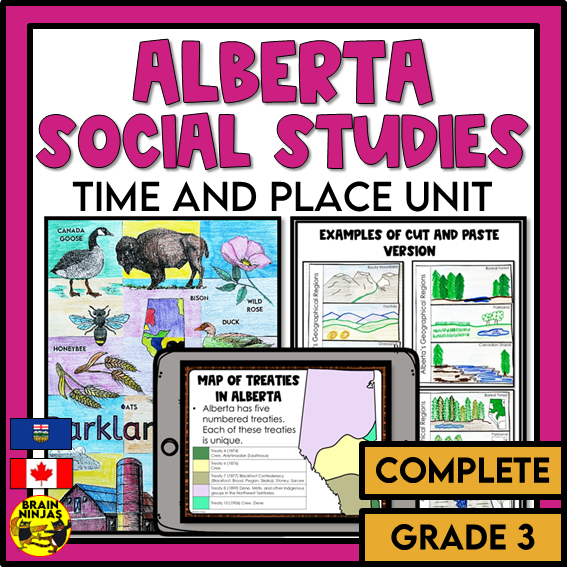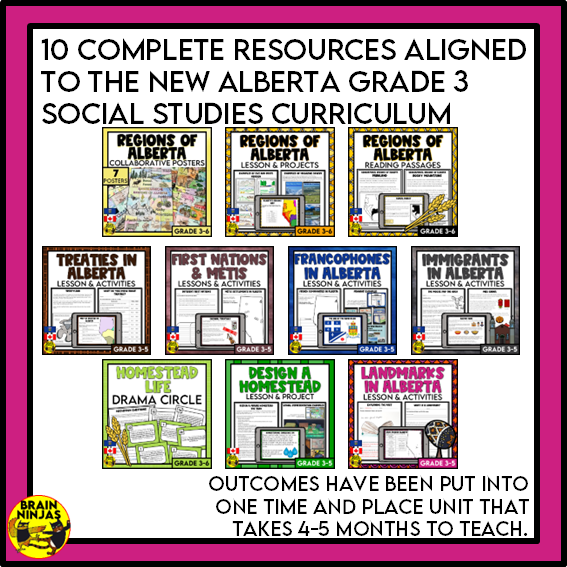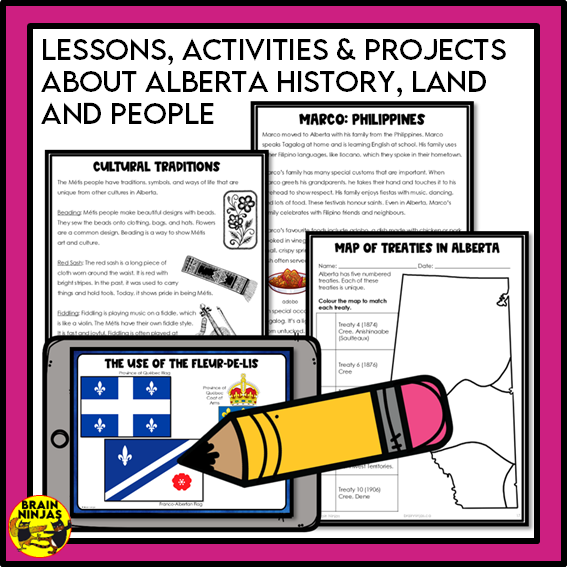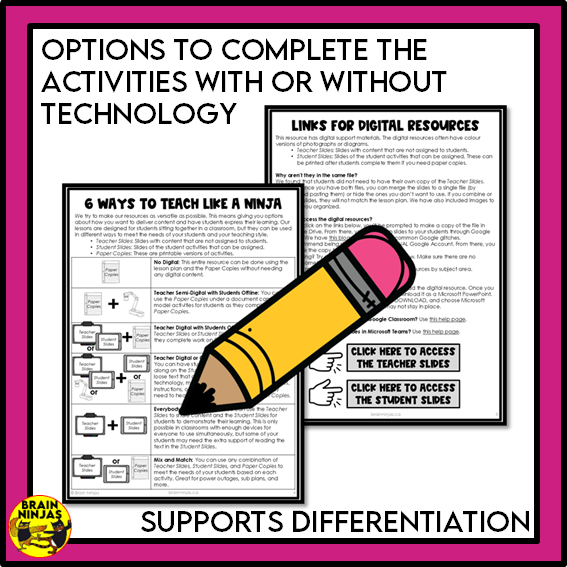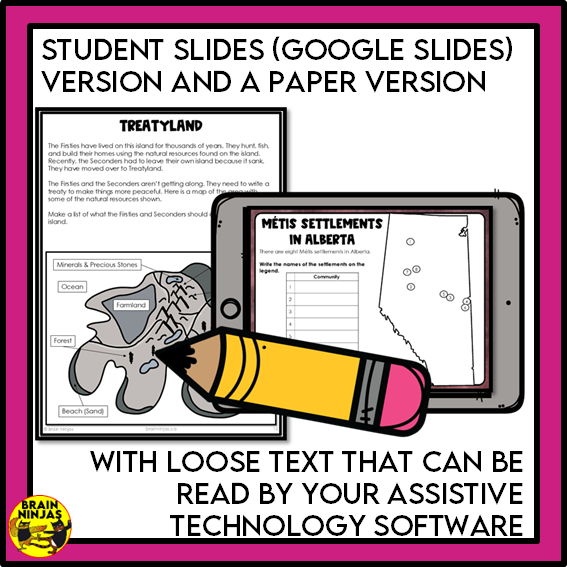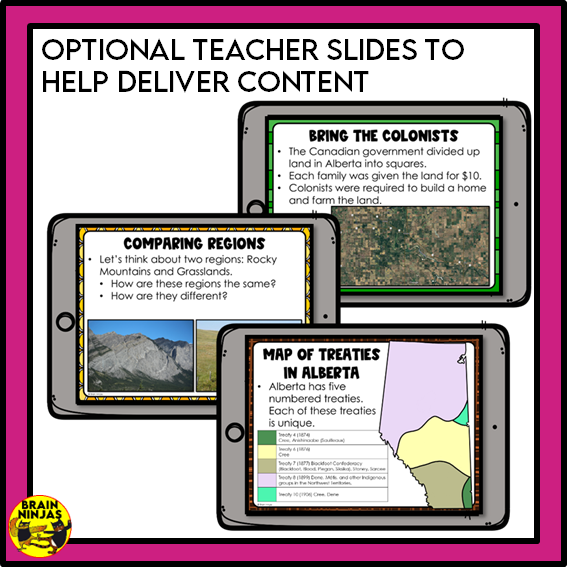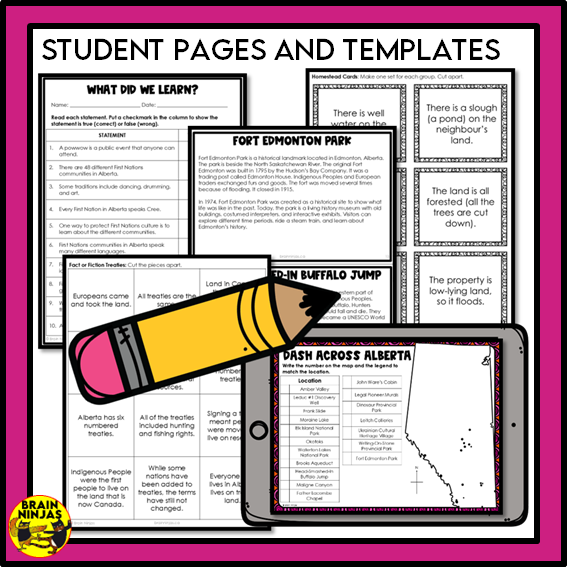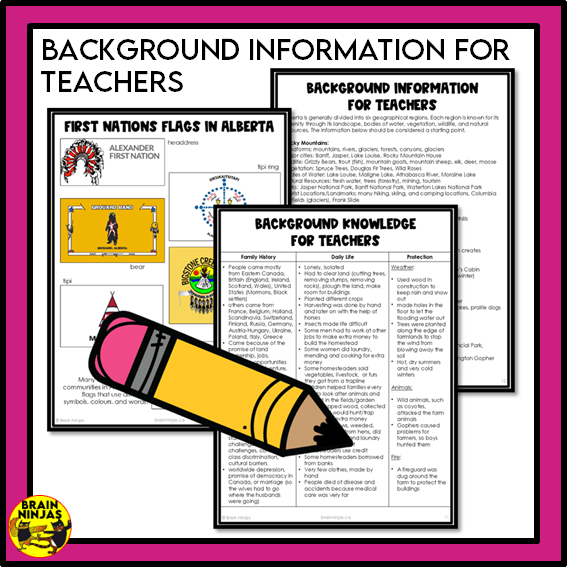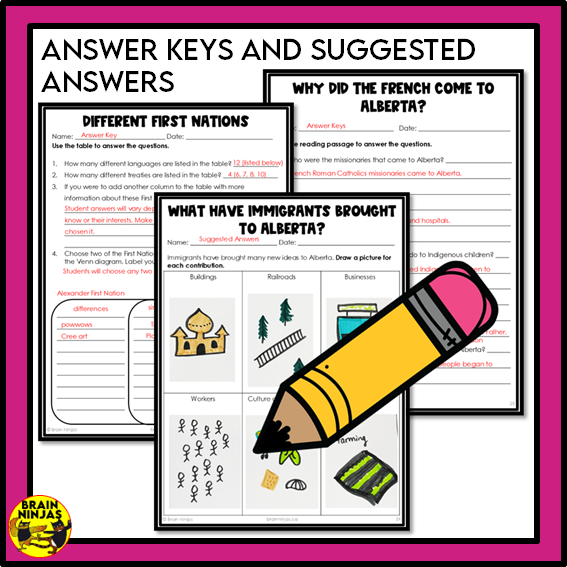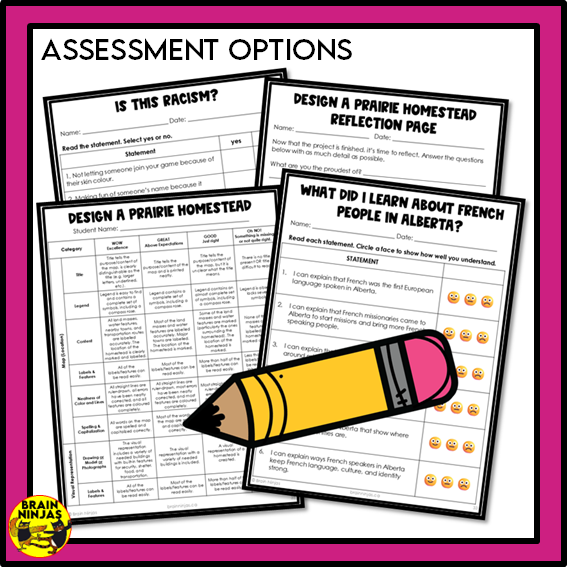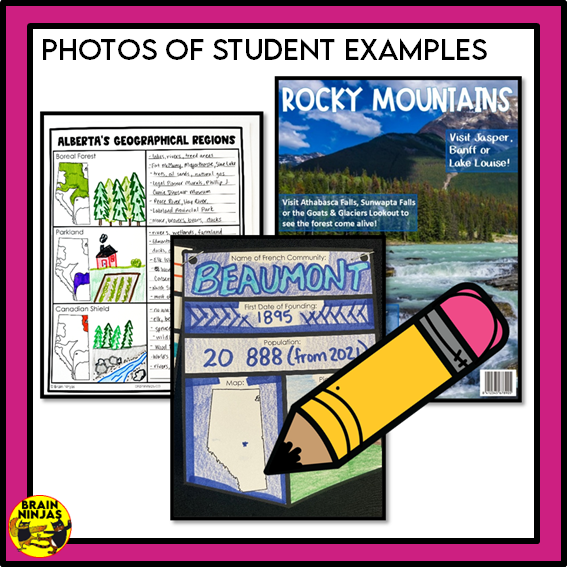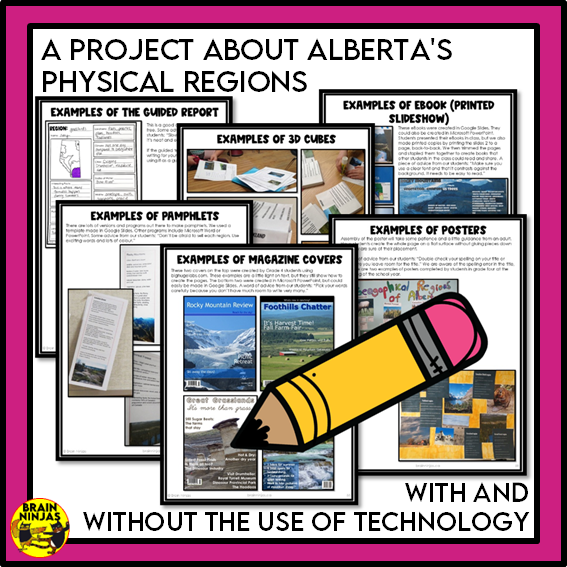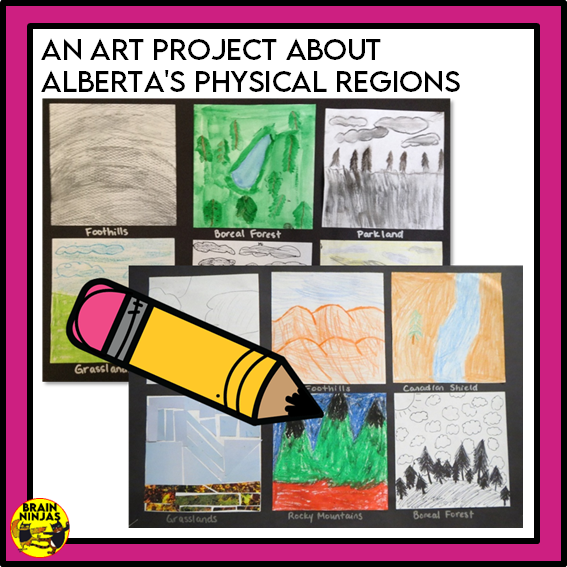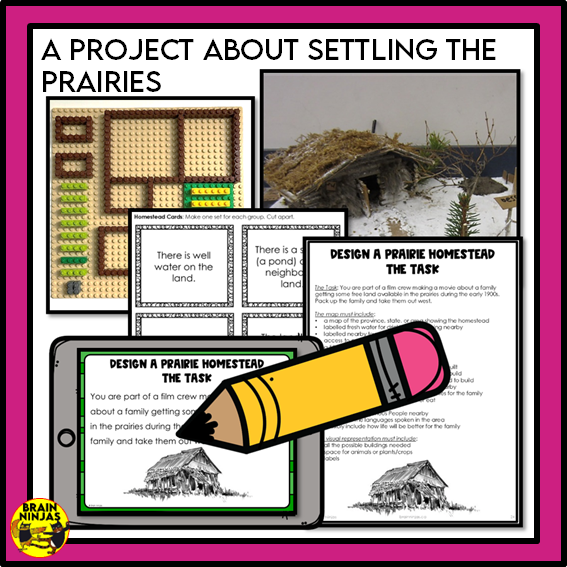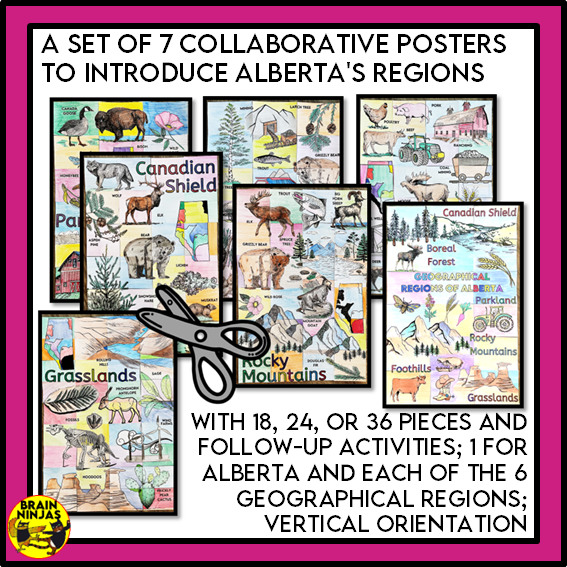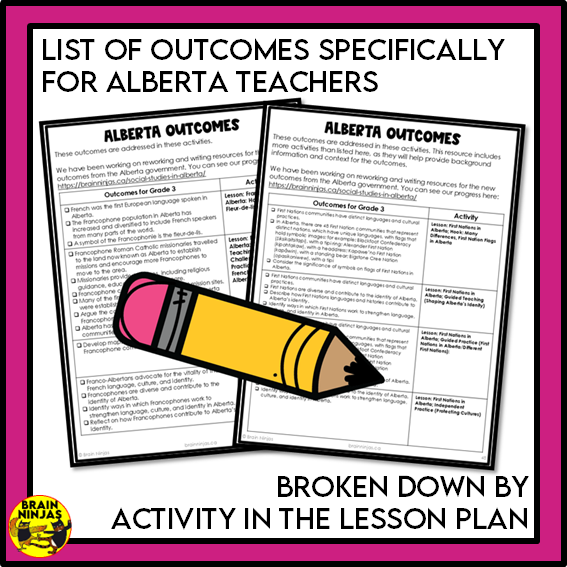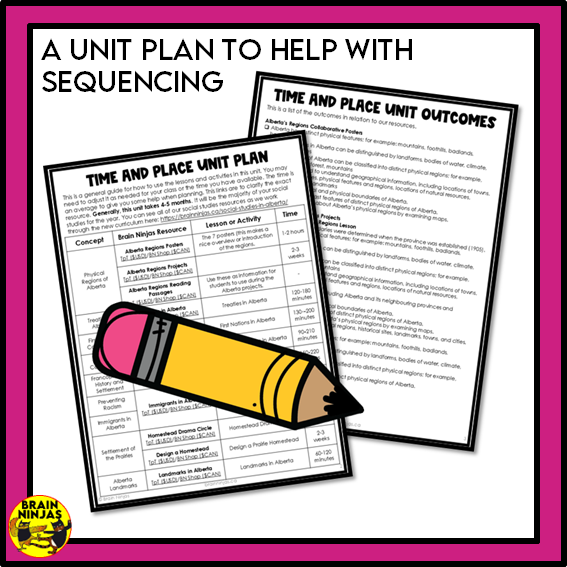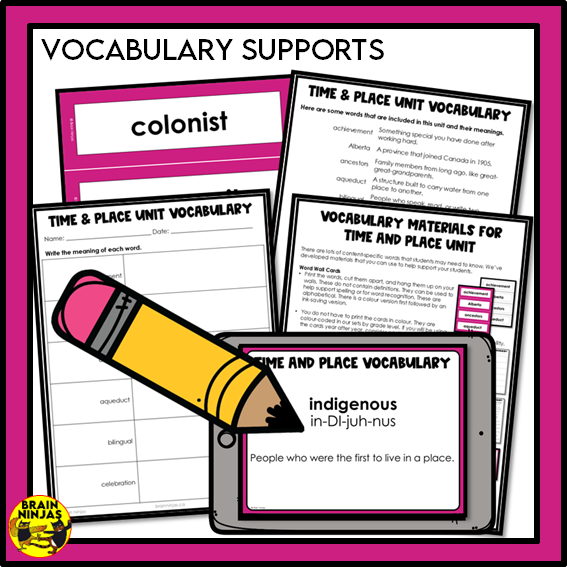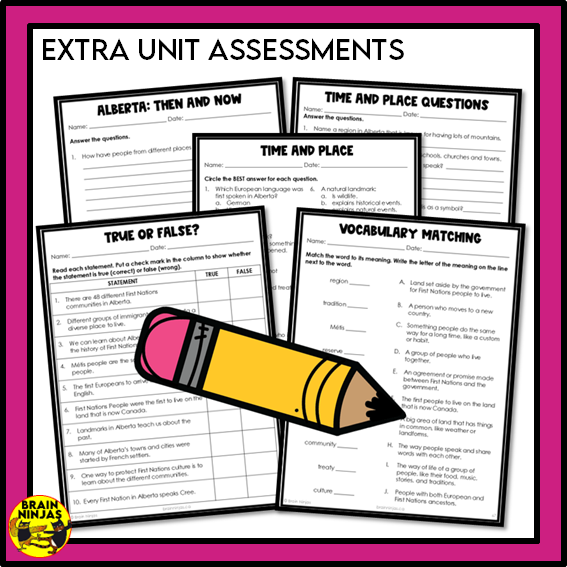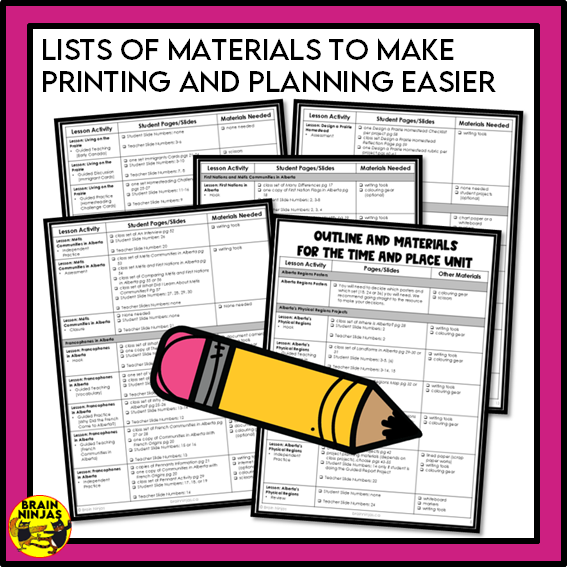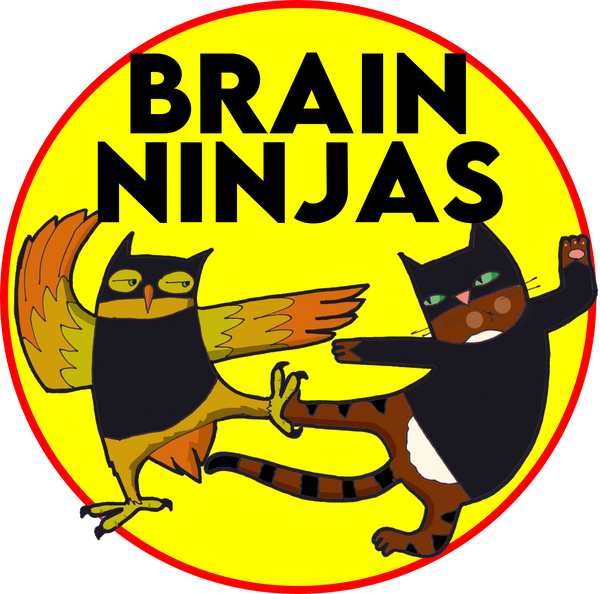Alberta Social Studies Grade 3 Time and Place Unit | Paper and Digital
Alberta Social Studies Grade 3 Time and Place Unit | Paper and Digital
Couldn't load pickup availability
Get a unit about the the people in Alberta who contribute to the diversity and identity planned in minutes. This unit includes all of our social studies resources related to time and place through activities, investigations, and complete lessons. Everything you need to teach the whole unit is included!
Get Grade 3 Alberta Social Studies for a full year and save money at the same time.
This unit was designed specifically for Alberta Grade 3 social studies teachers. It includes:
- lesson plans with step-by-step instructions and options for modifications.
- instructions for how to use our activities with and without technology so you can be flexible for your students and classroom environment.
- instructions for printing student workbooks while still offering differentiated options.
- detailed outlines of each activity with a list of materials along with a centralized list and reminders in each section of the lesson plan.
- optional Teacher Slides to support instruction and content delivery. You can choose to teach with or without them.
- vocabulary list with phonetic pronunciations and definitions to help support your students.
- “I can” statements written in student-friendly language so students can self-assess their learning.
- student pages and templates.
- answer keys and suggested answers.
- photos of student examples.
- activities to support learning content specific vocabulary.
- background information for teachers so you don't need to be an expert.
- simple assessments like quizzes. Rubrics are included for teachers to use for marking projects.
- ideas for how to use this resource in the classroom, online, or a mix.
- digital versions of all the student reading and writing pages that use Google Slides. You must download the PDF files and use the access links in the files to get your digital copies.
- an alignment guide for Alberta Outcomes in each resource broken down by lesson and activity.
This social studies topics are:
- Alberta's Physical Regions Collaborative Posters: directions to run the activity with your students, starting with an overview of the six regions (Boreal Forest, Parkland, Rocky Mountains, Grasslands, Foothills, and the Canadian Shield) in Alberta and following up with each of the six individual regions in more detail.
- Alberta's Geographical Regions Lesson and Projects: Boreal Forest, Parkland, Rocky Mountains, Grasslands, Foothills, and the Canadian Shield; information about natural resources, physical features, towns/cities, vegetation, animals, climate and landmarks for each region; a map lesson to learn the different regions of Alberta; landforms; six different project-based learning activities for students to choose from. These projects further deepen the understanding of the regions. Students create a project and present it. Some of the projects can be done digitally.
- Alberta's Physical Regions Reading Passages: six reading passages designed to support learning about Alberta's six geographical regions. These passages may need to be read with teacher support, particularly at the beginning of the Grade 3 school year. The digital version has loose text that can be read by your assistive software; information about natural resources, physical features, towns/cities, vegetation, animals, climate and landmarks for each region; text features: bolded words, text boxes, maps, captions, photographs, tables, charts
- Immigrants in Alberta: how different groups of people have been and continue to be impacted by racism in Alberta; ways to combat racism; cultural traditions, languages, skills and diversity that has been brought to Alberta by immigrants; people from different countries: Ukraine, India, Nepal, Philippines, Syria, Israel, China and Jordan; people of different faiths: Islam (Muslim), Judaism, Hinduism, and Sikh; different languages spoken by immigrants: Hebrew, Arabic, Mandarin, Ukrainian, Punjabi, Hindi and Tagalog; contributions to Alberta by immigrants including businesses, buildings, skills, workers, cultural activities and food.
- Treaties in Alberta: definition and process for treaties according to Canada (the Crown); the five numbered treaties in Alberta: Treaty 4, Treaty 6, Treaty 7, Treaty 8, Treaty 10; the numbered treaties in Canada. An explanation that other treaties exist (such as the ones created before confederation and unceded territories), but the focus of this resource is on the numbered treaties; background information for the teacher including: The Royal Proclamation of 1763, the treaty process and Indian Agents; the general purpose of treaties in Canada; activity about treaty members; decision making and consensus; a hands-on activity to create a treaty; reasons why some treaties are disputed.
- First Nations and Métis Communities in Alberta: the many differences of First Nations communities in Alberta; symbols, cultural differences, languages and traditions of different First Nations; how First Nations protect their cultures and traditions; how laws in Alberta and Canada protect First Nations culture and languages; how First Nations people contribute to the diversity and identity of Alberta; a map of Métis settlements in Alberta; the origins, history, cultural traditions, language of the Métis people; symbols of the Métis people including the Métis flag, Michif, beadwork, fiddling and jigging; protecting Métis culture with self-governance laws; comparing First Nations and Métis cultures.
- Francophones in Alberta: how French language and culture was brought to Alberta with the missionaries; cultural symbols such as the fleur-de-lis, Francophone flag of Alberta and places French culture appears in other symbols; activities to learn about how many communities in Alberta have French heritage; immigration of French speakers; a map of French communities in Alberta; the difference between officially bilingual communities and francophone communities; ways French language and culture are protected in Alberta; how Francophones contribute to the diversity and identity of Alberta.
- Homestead Life Drama Circle: learning about the impact of colonization in Indigenous People who traditionally have lived on the Canadian prairies; challenges of the immigrants who settled on the prairies; the process of getting "free land" for homesteading.
- Design a Prairie Homestead: Students take on the role of documentarians as they research and report on the experiences of a fictional family settling on the prairies of Early Canada. This hands-on activity encourages creative thinking, historical inquiry, and map skills, making it ideal for Social Studies classrooms looking to deepen understanding of prairie settlement and homesteading in Canada; included passages about different immigrants and a concept-based learning activity to get your students started.
-
Landmarks in Alberta: different reasons landmarks are important: natural processes and human events; natural landmarks in Alberta (there are more but we have included information for these): Frank Slide, Maligne Canyon, Okotoks, Elk Island National Park, Moraine Lake, Waterton Lakes National Park, Dinosaur Provincial Park; historical (human event) landmarks in Alberta (there are more but we have included information for these): Brooks Aqueduct, Legal Pioneer Murals, Fort Edmonton Park, Head-Smashed-In Buffalo Jump, John Ware’s Cabin, Father Lacombe Chapel, Ukrainian Cultural Heritage Village, Writing-On-Stone Provincial Park, Leitch Collieries, Amber Valley, Leduc #1 Discovery Well; mapping, photos of each landmark.
The unit includes additional bonus materials:
- a unit plan to assist with sequencing.
- a list of Alberta Social Studies outcomes to help with planning.
- a list of materials outlined for each activity.
- vocabulary support materials: word wall words, glossary pages, definition worksheets, digital flashcards, word with with phonetic pronunciations and definitions.
- extra assessments to assess student learning of the whole unit.
Ninja Note: If you teach in Alberta, this resource has been written for the new social studies curriculum. Learn more about how we're writing and adjusting resources for the new curriculum. https://brainninjas.ca/social-studies-in-alberta/
This activity aligns with:
- the Alberta Social Studies Curriculum Grade 3 ©2025
This activity supports:
- any lessons about the different people that contribute to Alberta's identity.
- Alberta or Canadian history.
- lessons about Alberta's geography and physical features.
- lessons about First Nations and Métis communities in Alberta.
- lessons about immigrants to Alberta including cultural traditions and languages.
- racism and ways to prevent it.
Looking for more social studies for Alberta teachers?
- Time and Place Unit for Alberta Social Studies Grade 3
- Systems Unit for Alberta Social Studies Grade 3
- Citizenship Unit for Alberta Social Studies Grade 3
Our Grade 3 Social Studies Full Year is here.
Ninja Note: This is a ZIP file with PDFs files inside. Extract the PDF files and save them on your computer. To access the digital versions of the files, download the PDFs and click on the access links in those files.
Have a question? Before contacting us, check our Frequently Asked Questions page.
